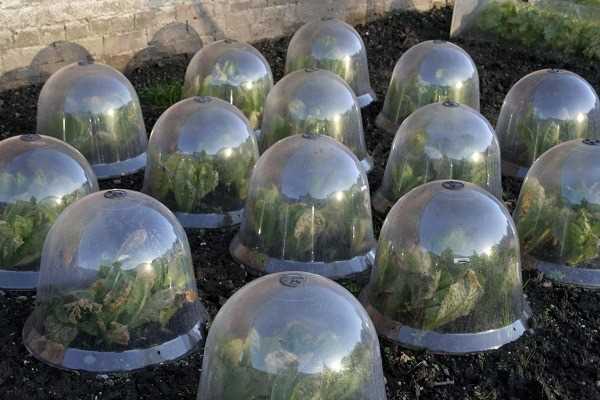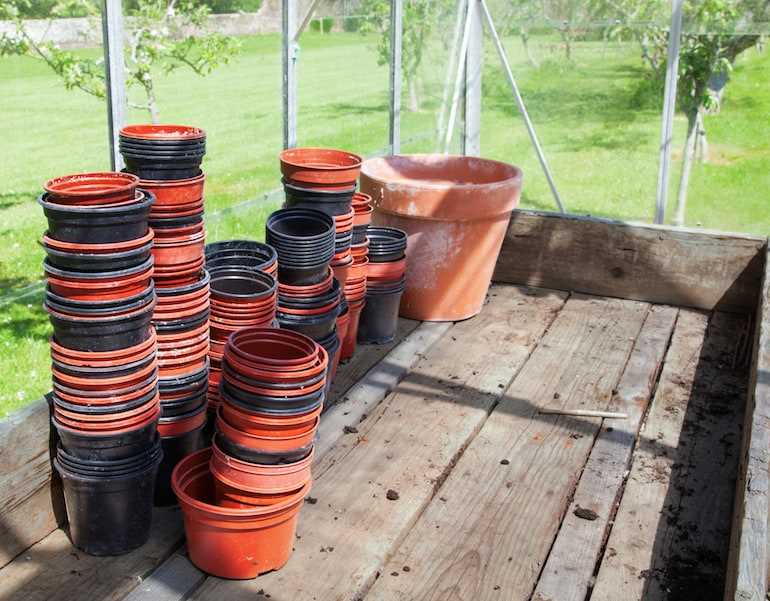- Clearing out summer plants
- 1. Remove dead or dying plants
- 2. Harvest any remaining produce
- 3. Cut back overgrown plants
- 4. Divide and transplant perennials
- 5. Clear out weeds and debris
- 6. Add compost or organic matter
- 7. Clean and store garden tools
- Mulching the soil
- 1. Choose the right mulch
- 2. Clear the area
- 3. Apply a layer of mulch
- 4. Avoid piling mulch against tree trunks
- 5. Reapply mulch as needed
- 6. Consider using a landscape fabric
- 7. Keep mulch away from the base of plants
- Planting autumn bulbs
- Choose the right bulbs
- Prepare the soil
- Planting depth
- Spacing
- Planting technique
- Watering and mulching
- Pruning trees and shrubs
- 1. Remove dead or damaged branches
- 2. Thin out overcrowded branches
- 3. Shape trees and shrubs
- 4. Prune flowering and fruiting plants
- 5. Remove suckers and water sprouts
- 6. Clean up pruned branches
- 7. Follow proper pruning practices
- Dividing and Transplanting Perennials
- Cleaning and storing garden tools
- Clean your tools
- Inspect for damage
- Sharpen blades and oil moving parts
- Organize and store
- Create an inventory
- Maintain throughout the season
- Protecting Sensitive Plants
- 1. Covering Plants
- 2. Mulching
- 3. Bringing Plants Indoors
- 4. Pruning
- 5. Watering
- 6. Moving Plants to a Sheltered Area
- 7. Monitoring the Weather
- Creating a compost pile
- 1. Choose a location
- 2. Prepare the site
- 3. Gather organic materials
- 4. Layer the materials
- 5. Add water
- 6. Turn the pile
- 7. Monitor the temperature
- Questions and Answers:
- What are some essential tasks to do in the garden before winter?
- How should I clean up fallen leaves in my garden?
- What should I do with dead plants in my garden?
- Why is it important to mulch the soil in the autumn?
- When should I trim back my perennials?
- How can I protect delicate plants from frost in the winter?
- What are some other tasks I should consider for my autumn garden?
- Videos: ESSENTIAL Autumn Tasks for Highly-Productive Gardens
As autumn approaches, it’s time to start thinking about preparing your garden for the colder months ahead. This is the perfect time to make sure your garden is ready for winter so that it can bounce back and thrive come springtime. There are several essential tasks that should be completed in the autumn to ensure the health and success of your garden.
First and foremost, it’s important to start cleaning up and clearing out your garden. Remove any dead or dying plants, weeds, and debris. This will not only improve the overall appearance of your garden, but it will also help to prevent diseases and pests from spreading to healthy plants. It’s also a good time to prune any shrubs or trees to encourage healthy growth.
Another important task is to prepare your soil for winter. This can be done by adding compost or organic matter to improve the soil’s structure and fertility. It’s also a great time to test your soil’s pH level and make any necessary adjustments. This will help ensure that your plants have the proper nutrients they need to survive the winter.
Don’t forget to protect your plants from the harsh winter weather. This can be done by mulching around the base of plants to insulate their roots and help retain moisture. It’s also a good idea to cover delicate plants with burlap or protective coverings to shield them from frost and extreme temperatures.
In addition to protecting your plants, it’s important to remember to protect any vulnerable garden structures. This includes things like trellises, arbors, and fences. Inspect these structures for any damage and make any necessary repairs before winter sets in.
Finally, don’t forget about your garden tools and equipment. Give them a good clean and make any necessary repairs or replacements before storing them away for the winter. This will help ensure they’re in good working condition when it’s time to start gardening again in the spring.
By completing these essential autumn garden tasks, you’ll be setting your garden up for success in the coming winter and ensuring a strong start when spring arrives. Take the time now to do the necessary preparations, and you’ll reap the rewards when your garden comes back to life next year.
Clearing out summer plants
As autumn approaches, it’s time to start clearing out your summer plants to make way for new growth in the coming season. Here are some essential tasks to consider:
1. Remove dead or dying plants
Inspect your garden and remove any plants that have started to wither or die. This will help prevent the spread of diseases and make space for new plants to thrive.
2. Harvest any remaining produce
If you have any edible plants in your garden, like tomatoes or zucchini, make sure to harvest them before clearing out the plants. This way, you can still enjoy the last of the summer’s bounty.
3. Cut back overgrown plants
Some plants, like perennials or shrubs, may have become overgrown during the summer. Trim them back to a more manageable size, taking care to remove any dead or diseased branches.
4. Divide and transplant perennials
If you have perennials that have outgrown their space, consider dividing them and transplanting them to other areas of your garden. This will help rejuvenate the plants and promote healthier growth.
5. Clear out weeds and debris
Weeds can quickly take over your garden if not attended to. Take the time to pull out any weeds and remove any other debris, such as fallen leaves or sticks. This will help keep your garden clean and prepare it for winter.
6. Add compost or organic matter
Before planting new crops or flowers for the autumn, consider adding compost or organic matter to your soil. This will enrich the soil and provide essential nutrients for the next season’s growth.
7. Clean and store garden tools
As you finish clearing out your summer plants, take the opportunity to clean and store your garden tools. This will help prolong their lifespan and ensure they are ready for use in the next gardening season.
By clearing out your summer plants and preparing your garden for winter, you can set the stage for a successful and vibrant garden in the coming months. Take the time to complete these essential tasks, and you’ll be rewarded with a beautiful and productive garden.
Mulching the soil
Mulching the soil is an essential task in preparing your garden for winter. It helps to protect plant roots, conserve moisture, and prevent weed growth. Here are some important steps to follow when mulching your garden:
1. Choose the right mulch

There are various types of mulch available, including organic and inorganic options. Organic mulch, such as wood chips, straw, or shredded leaves, decomposes over time and enriches the soil. Inorganic mulch, such as gravel or pebbles, doesn’t break down and is more suited for decorative purposes.
2. Clear the area
Before applying mulch, remove any weeds, dead plants, or debris from the area. This ensures that the mulch is applied to a clean and weed-free surface.
3. Apply a layer of mulch
Spread a layer of mulch around your plants, making sure to leave a small gap around the stems to prevent rot. The thickness of the mulch layer should be around 2-4 inches, depending on the type of mulch.
4. Avoid piling mulch against tree trunks
When mulching around trees, make sure to keep the mulch away from the trunk. Piling mulch against the trunk can create a moist environment that promotes rot and disease.
5. Reapply mulch as needed
Mulch can break down over time, so it’s important to check the depth and condition of the mulch regularly. If the mulch layer becomes thin or starts to decompose, add another layer to maintain its effectiveness.
6. Consider using a landscape fabric
If you want to prevent weed growth even further, you can consider using a landscape fabric under the mulch. The fabric acts as a barrier that stops weeds from growing through the mulch layer.
7. Keep mulch away from the base of plants
Be careful not to pile mulch directly against the base of plants. This can trap moisture and lead to rot or fungal diseases. Leave a gap around the stems to allow for air circulation.
Following these steps will help protect your plants and soil throughout the winter months. Mulching is an important part of garden maintenance that can make a big difference in the health and appearance of your garden.
Planting autumn bulbs
Planting autumn bulbs is an essential task for preparing your garden for winter. By planting bulbs in the autumn, you can ensure a beautiful display of flowers in the spring.
Choose the right bulbs
Before planting, it’s important to choose the right bulbs for your garden. Consider the climate in your area and the type of soil you have. Some popular autumn bulbs include tulips, daffodils, crocuses, and hyacinths.
Prepare the soil
Prepare the soil by removing any weeds, rocks, or debris. Loosen the soil with a garden fork and add organic matter, such as compost or well-rotted manure, to improve drainage and fertility.
Planting depth
Check the planting instructions for each type of bulb, as the planting depth may vary. As a general rule, bulbs should be planted at a depth that is approximately three times their height. For example, if a bulb is 1 inch tall, it should be planted 3 inches deep.
Spacing
Space the bulbs apart according to the recommendations on the packaging. Most bulbs should be planted about 4-6 inches apart to allow room for growth.
Planting technique
Use a small hand trowel or bulb planter to dig a hole for each bulb. Place the bulb in the hole with the pointed end facing up. Cover the bulb with soil, gently firming it down with your hands.
Watering and mulching
After planting, give the bulbs a good watering to help settle the soil around them. Apply a layer of mulch, such as wood chips or straw, to help conserve moisture and suppress weeds.
Remember to label the areas where you have planted bulbs, so you don’t accidentally dig them up later. With proper care and attention, your autumn-planted bulbs will reward you with a stunning floral display in the spring.
Pruning trees and shrubs
Pruning trees and shrubs is an important task to tackle in the autumn to help prepare your garden for winter. Pruning helps maintain the shape and health of your plants and promotes new growth in the spring. Here are some essential tips for pruning trees and shrubs:
1. Remove dead or damaged branches
Inspect your trees and shrubs for any dead or damaged branches and remove them. Dead branches can be easily identified by their lack of leaves and brittle appearance. Removing these branches will prevent them from falling and causing damage during winter storms.
2. Thin out overcrowded branches

If your trees or shrubs have branches that are overcrowded or crossing over each other, it’s a good idea to thin them out. This promotes better air circulation and allows more sunlight to reach the interior of the plant, reducing the risk of disease and promoting healthier growth.
3. Shape trees and shrubs
Autumn is a great time to shape your trees and shrubs by pruning branches to achieve the desired form. Use sharp pruning shears or loppers to make clean cuts just above a bud or lateral branch.
4. Prune flowering and fruiting plants
If you have flowering or fruiting trees or shrubs, it’s important to know the proper pruning techniques to maximize their bloom or fruit production. Research the specific needs of each plant and prune them accordingly.
5. Remove suckers and water sprouts
Suckers and water sprouts are vigorous growths that emerge from the base or trunk of trees and shrubs. They divert energy from the main plant and can weaken its overall structure. Remove these growths to maintain the health and shape of the plant.
6. Clean up pruned branches

Properly dispose of pruned branches by either cutting them into smaller pieces or taking them to a local composting facility. Keeping your garden clean and free of debris will help prevent pests and diseases from taking hold.
7. Follow proper pruning practices
Be sure to follow proper pruning practices, such as making cuts at a slight angle to help with water runoff and applying a pruning sealer to larger cuts to prevent disease. It’s also important to use clean and sharp tools to prevent the spread of pathogens.
By taking the time to prune your trees and shrubs in the autumn, you’ll set them up for success in the coming winter months and promote healthy growth in the spring.
Dividing and Transplanting Perennials
As the autumn season approaches, it is a great time to divide and transplant your perennials in the garden. This process not only helps to rejuvenate the plants but also allows you to expand or rearrange your garden beds.
Why Divide Perennials:
Rejuvenation: Dividing perennials helps to rejuvenate the plant by stimulating new growth. Over time, perennials can become overcrowded and start to produce fewer flowers. Dividing them into smaller clumps allows each division to thrive and produce more blooms.
Propagation: Dividing perennials is an excellent way to propagate new plants. Each division can be planted elsewhere in the garden, or shared with friends and neighbors, allowing you to expand your plant collection without spending extra money.
Healthy Growth: Dividing perennials helps prevent the spread of diseases and pests. By separating the plant into smaller sections, you can easily remove any infected or damaged portions, promoting healthier growth in the remaining parts.
When to Divide Perennials:
While the timing may vary for different perennial species, it is generally recommended to divide them in the early autumn or late spring. Dividing in the autumn allows the plants to establish their roots before the winter, ensuring a strong start in the following growing season.
How to Divide Perennials:
Prepare the Tools: Gather a sharp garden knife, a garden fork, and some plant labels.
Choose the Right Day: Pick a cool and cloudy day for dividing perennials to minimize stress on the plants.
Water the Plant: Water the plant thoroughly the day before dividing to ensure that the roots are well-hydrated.
Remove the Plant: Carefully dig around the plant with a garden fork, loosening the soil and lifting the entire clump out of the ground.
Divide the Clump: Use a garden knife or your hands to divide the clump into smaller sections. Each section should have healthy roots and shoots.
Replant: Dig a hole in the new location or prepare a container with fresh potting soil. Place the divided sections in their new homes, making sure the roots are covered and the plants are at the same depth as before.
Water and Mulch: Water the newly transplanted perennials thoroughly and apply a layer of mulch around the base to retain moisture and insulate the roots.
Conclusion:
Dividing and transplanting perennials in the autumn is a rewarding task that helps to maintain the health and vigor of your garden plants. By following the necessary steps, you can rejuvenate your perennials, propagate new plants, and promote healthy growth for the next growing season.
Cleaning and storing garden tools
As autumn comes to an end and winter approaches, it’s time to start preparing your garden for the colder months. One important task that often gets overlooked is cleaning and storing your garden tools. Properly maintaining your tools can help prolong their lifespan and ensure they are ready to use when spring arrives.
Clean your tools
The first step in preparing your tools for storage is to clean them. Remove any dirt, mud, or debris from the blades or surfaces of your tools. Use a stiff brush or a hose to scrub away stubborn dirt. For rusted tools, you can use steel wool or a wire brush to remove the rust. After cleaning, allow your tools to dry completely before storing them.
Inspect for damage
While cleaning, take the time to inspect your tools for any signs of damage. Check for loose or damaged handles, bent blades, or any other issues that may affect the performance of your tools. Repair or replace any damaged parts before storing your tools for the winter.
Sharpen blades and oil moving parts
If your garden tools have blades, such as pruners or shears, it’s a good idea to sharpen them before storing. Use a file or a sharpening stone to remove any dull edges and restore a sharp cutting surface. Additionally, lubricate any moving parts, such as hinges or pivot points, with a few drops of oil to keep them in good working condition.
Organize and store

Proper storage is key to keeping your garden tools in good shape during the winter months. Organize your tools in a dry, well-ventilated area where they are protected from freezing temperatures and excessive moisture. You can hang your tools on a pegboard or store them in a sturdy toolbox or shed.
Create an inventory
Before storing your tools, create an inventory of what you have. This will make it easier to locate your tools when you need them next spring. Take note of any missing or damaged tools so you can replace them before the gardening season begins.
Maintain throughout the season

While it’s important to clean and store your garden tools at the end of autumn, it’s also essential to maintain them throughout the gardening season. Regularly clean your tools after each use, and keep them sharp and well-oiled. This will help prevent rust, prolong their lifespan, and ensure they are always ready to use when you need them.
By following these steps, you can ensure that your garden tools are properly cleaned and stored for winter. Taking the time to care for your tools will pay off in the long run, as you’ll be able to enjoy a productive and hassle-free gardening season next spring.
Protecting Sensitive Plants
As the colder temperatures arrive, it’s important to take steps to protect your sensitive plants from the harsh winter weather. Sensitive plants are typically those that are not winter hardy in your climate zone or those that are still establishing themselves in your garden.
1. Covering Plants
One effective way to protect sensitive plants is by covering them. Use materials such as burlap, frost blankets, or old bedsheets to create a barrier between the plants and the cold air. Make sure to secure the coverings firmly to prevent them from being blown away by strong winds.
2. Mulching
Mulching is another great way to protect sensitive plants. Apply a layer of mulch around the base of the plants to insulate the soil and help regulate temperature fluctuations. Use organic materials such as straw, leaves, or wood chips for best results.
3. Bringing Plants Indoors
If you have potted sensitive plants, consider bringing them indoors for the winter. Find a suitable location with enough sunlight and space for the plants to thrive. Make sure to acclimate the plants to the indoor conditions gradually to avoid shock.
4. Pruning
Pruning can help prepare sensitive plants for winter by removing any dead or damaged branches. This will prevent further damage from occurring and promote healthy growth in the following spring.
5. Watering
Proper watering is crucial for protecting sensitive plants during the winter. Make sure to water the plants thoroughly before the ground freezes to provide them with enough hydration. However, be cautious not to overwater, as this can lead to root rot.
6. Moving Plants to a Sheltered Area
If possible, move sensitive plants to a sheltered area in your garden, such as against a wall or a fence. This can help provide additional protection from cold winds and extreme weather conditions.
7. Monitoring the Weather
Keep a close eye on the weather forecast throughout the winter season. Be prepared to take additional steps, such as applying additional covers or providing supplemental heat, if there are prolonged periods of extreme cold or frost.
By following these tips, you can help protect your sensitive plants and ensure that they survive the winter season, ready to bloom and thrive in the coming spring.
Creating a compost pile
Creating a compost pile is an essential task during the autumn season. Composting is a natural process that transforms organic waste into nutrient-rich soil. By composting, you can reduce household waste and create a valuable resource for your garden.
1. Choose a location
Find a suitable location for your compost pile. Ideally, it should be in a well-drained area that receives partial shade. Avoid placing the pile near trees or structures that could obstruct airflow.
2. Prepare the site
Clear the chosen area of any debris or weeds. You can use a rake or shovel to remove any grass or plants. This will help create a clean space for your compost pile.
3. Gather organic materials
Collect organic materials such as leaves, grass clippings, kitchen scraps, and garden waste. These materials will serve as the “green” and “brown” components of your compost pile.
4. Layer the materials
Start by creating a layer of “brown” materials, such as dry leaves or straw, at the bottom of your compost pile. Then add a layer of “green” materials, such as grass clippings or kitchen scraps. Continue alternating layers until you have used all the materials.
5. Add water
Moisten each layer as you go to ensure the compost pile stays damp. The composting process requires moisture, so it’s important to keep the pile moist but not saturated. Use a hose or watering can to add water as needed.
6. Turn the pile
To accelerate the decomposition process, turn the compost pile every few weeks. This will help mix the materials and provide oxygen to the microorganisms that break down the organic matter.
7. Monitor the temperature
Check the temperature of the compost pile regularly. Proper composting requires temperatures between 120 and 160 degrees Fahrenheit. If the temperature is too low, the decomposition process may be slow, while if it is too high, beneficial organisms may be killed.
By following these steps, you can create a compost pile that will eventually result in nutrient-rich compost for your garden. Composting is not only beneficial for your plants, but it also helps reduce waste and improve the health of the soil.
Questions and Answers:
What are some essential tasks to do in the garden before winter?
Some essential tasks to do in the garden before winter include cleaning up fallen leaves, removing dead plants, mulching the soil, trimming back perennials, and protecting delicate plants from frost.
How should I clean up fallen leaves in my garden?
To clean up fallen leaves in your garden, you can use a leaf blower, rake, or lawn mower. You can either compost the leaves or dispose of them in a yard waste bag.
What should I do with dead plants in my garden?
It is important to remove dead plants from your garden before winter because they can harbor pests and diseases. You can either compost them if they are free of disease or dispose of them in the trash.
Why is it important to mulch the soil in the autumn?
Mulching the soil in autumn helps to insulate plant roots, prevent weed growth, and retain moisture. It also adds organic matter to the soil as it breaks down.
When should I trim back my perennials?
Perennials should be trimmed back in late autumn or early winter, after they have finished blooming. This helps to promote healthy growth and prevents the plants from becoming overgrown.
How can I protect delicate plants from frost in the winter?
You can protect delicate plants from frost by covering them with blankets, sheets, or frost cloths. It is also important to bring potted plants indoors or into a protected area.
What are some other tasks I should consider for my autumn garden?
In addition to the essential tasks mentioned, you can also consider planting spring bulbs, aerating the soil, and preparing your garden tools for winter storage.







